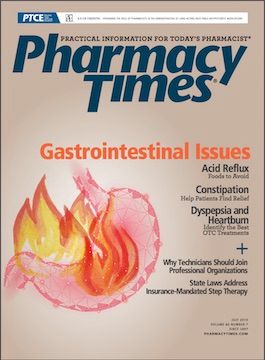Publication
Article
Pharmacy Times
Reporting and Second-Order Problem Solving Are Critical
Author(s):
Health care practitioners are repeatedly challenged by unexpected problems due to a variety of system failures that can hinder patient care.
Health care practitioners are repeatedly challenged by unexpected problems due to a variety of system failures that can hinder patient care. These could include a critical drug in short supply, a new barcode scanner having a rate of failure, a prescription that is never received by the pharmacy, and a staff person or 2 who are out sick. The list of failures is long and varied, often making executing tasks as designed difficult or impossible.1
However, health care practitioners tend to be very proficient at working around these failures. They may not carry out the tasks as designed, which may mean not engaging colleagues, patients, or technology, because some aspects of the tasks fail to meet patients’ needs.
This ability to address unexpected problems is valuable in health care, especially when a patient’s life may be at risk. We expect practitioners to use critical thinking to navigate processes or systems that do not work well in the moment. We reward practitioners skilled in using their ingenuity to work around a deficient or faulty system and still carry out tasks. Seeking help is often considered a weakness.1-3 However, nonstandard processes and workarounds often take the form of at-risk behaviors. These are behaviors through which practitioners knowingly break rules but have little or no perception of the risks they are taking, or they mistakenly think the risks are insignificant or justified.
Practitioners also respond to dysfunctional processes with first-order problem solving, addressing only the immediate problems, and may not report them or attempt to address their underlying causes (ie, second-order problem solving). They are often pressed for time and forced to quickly patch problems so they can carry out their immediate responsibilities. Unfortunately, workarounds only patch problems temporarily and merely transfer them to another person, place, or time. If practitioners do not fundamentally solve a problem, it will resurface. Long-term remedies are necessary to change the underlying system.
The true magnitude of operational failures in the system remains hidden because practitioners fail to report them. Unlike errors, the system problems faced by health care practitioners receive little attention but present a valuable source of information about ways in which the system is not working. The need for a workaround is a sign that something is amiss, increasing the risk of errors and potential harm to patients.
SAFE PRACTICE RECOMMENDATIONS
Reporting of frequently encountered problems is critical for second-order problem solving and organizational learning for lasting improvements. To encourage organizational learning, consider the following strategies:
- Coach health care practitioners to see the risk associated with behaviors that work around problems they encounter and that these workarounds must be reported for analysis and system improvement.
- Create a work environment in which staff members feel empowered to ask for help and report barriers to care. This is not to say that health care practitioners are not capable of creating temporary solutions to their daily problems but that a failure to report these problems leads to at-risk behaviors, rather than long-term solutions, as the norm. Some workarounds may be superior to existing procedures, which may require changes. No problem is too small to report.
- Establish frequent opportunities for communicating about problems with frontline practitioners. For example, managers and other leaders can be physically present in work areas and responsive to practitioners’ messages.
- Examine the problem shortly after it occurs. This will likely be more productive than waiting to discuss the issue weeks or months later. Important information about underlying causes of problems can be lost over time.
- Once a problem has been identified and the underlying causes examined, initiate an action plan by working with health care practitioners who have intimate knowledge of the systems’ weak points, are motivated to improve reliability, and can offer feasible solution ideas. Participation in this process and problem resolution should be an explicit part of staff and leadership job descriptions, and enough time must be allocated for improvement efforts. The action plan should be communicated to staff and then implemented expeditiously; problems that are reported but continue for weeks or months will be viewed by staff as unimportant. Monitoring to ensure the action plan is working is crucial. Communicating successful efforts to solve daily system problems is vital to demonstrating that reported problems are taken seriously and acted on. This in turn will provide ongoing motivation to continue to report problems.
Michael J. Gaunt, PharmD, is a medication safety analyst and the editor of ISMP Medication Safety Alert! Community/Ambulatory Care Edition.
References
- Edmondson AC. Learning from failure in healthcare: frequent opportunities, pervasive barriers. Qual Saf Health Care. 2004;13(suppl 2):ii3-ii9. doi: 10.1136/qhc.13 .suppl_2.ii3.
- Tucker AL. Workarounds and resiliency on the front lines of health care. Patient Safety Network website. psnet.ahrq.gov/perspectives/perspective/78. Published August 2009. Accessed June 13, 2019.
- Tucker AL. The impact of operational failures on hospital nurses and their patients. J Operations Manage. 2004;22(2):151-169. doi: 10.1016/j.jom.2003.12.006.







